Asian Development Bank and Sri Lanka: Fact SheetThis Asian Development Bank (ADB) Fact Sheet provides social and economic indicators on Sri Lanka and information on ADB operations in Sri Lanka and contact details. ADB has worked closely with the Government of Sri Lanka since 1966 and has provided loans, grants, and technical assistance totaling $8.4 billion. ADB assistance will focus on ensuring quality economic growth as Sri Lanka aims to reach upper-middle-income status. Author: Asian Development Bank Year: 2017 Download Tags: ADB, Sri Lanka, Development Measuring and Analyzing the Impact of GVCs on Economic Development (English)This report shows how the global economy is changing continuously and rapidly. It attempts to give a detailed picture of the dynamic network structure of the global economy, and tries to show how economies link up, specialize, and grow, in light of global value chains. It explains the difference between elements of an economy that are tradable and those that are non-tradable, while also presenting a picture of evolving patterns of independence. Author: Asian Development Bank Year: 2017 Download Tags: Development, WB, WTO Asian Development Bank and the Maldives: Fact SheetThis Asian Development Bank (ADB) Fact Sheet provides social and economic indicators on Maldives, and information on ADB operations and contact details. ADB is helping Maldives upgrade commercial and domestic harbors, ensure power supply reliability, boost economic growth, and reduce regional disparities in living standards. Projects in sustainable energy development are helping Maldives achieve carbon neutrality and reduce high fuel costs. Since 1978, ADB has approved 29 loans and grants totaling $248.53 million for Maldives, and has funded 67 technical assistance projects totaling $29.65 million. Author: Asian Development Bank Year: 2017 Download Tags: ADB, Maldives, Energy, Transport, Development, Sustainability 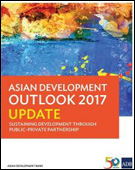 Asian Development Outlook (ADO) 2017 Update: Sustaining Development through Public-Private PartnershipDeveloping Asia is forecast to expand by 5.9% in 2017 and 5.8% in 2018, a slight upgrade from projections in the Asian Development Outlook 2017. However, growth forecast for South Asia is downgraded to 6.7% in 2017. India’s growth remains strong and most South Asian countries are expected to meet or exceed growth forecasts from April. Exceptions are Sri Lanka, where agriculture was affected by drought and floods, and Bhutan, where geological problems have constrained construction on two large hydropower projects. Growth in Nepal surged in 2017 on earthquake recovery but is slowing as agriculture struggles, following severe flooding in August 2017. Inflation forecast in South Asia is lowered to 4.2% for 2017 and 4.7% for 2018. Favorable global commodity prices, good harvests, and prudent macroeconomics are expected. Author: Asian Development Bank Year: 2017 Download Tags: Asia, Development, Sustainability, Public Private Partnerships, South Asia, India, Sri Lanka, Agriculture, Bhutan, Hydropower, Energy, Nepal The Little Green Data Book 2017Based on World Development Indicators 2017 and its online database, the Little Green Data Book 2017 looks at development and the environment through more than 50 indicators for all countries around the world. This edition features indicators on capture fisheries, aquaculture production, and marine-related areas, focusing on the economic importance of fisheries for sustainable development. Author: World Bank Year: 2017 Download Tags: Environment, WB, Development, Sustainability World Development Indicators 2017This report compiles statistics on global development, with this years’ database including more indicators covering the Sustainable Development Goals and more data disaggregated by sex, age, wealth quintile, and urban or rural location. The online database (http://data.worldbank.org) now includes more than 1,400 indicators for more than 220 economies (including those from South Asia), with some data series extending back more than 50 years. Author: World Bank Year: 2017 Download Tags: WB, Development, Sustainable Development Goals, South Asia Asian Development Outlook (ADO) 2017 Supplement: Cautious Optimism for Asia's OutlookWith export demand stronger than expected in the first quarter of 2017, Asia’s GDP is expected to expand faster than forecast in April in Asian Development Outlook 2017. Developing Asia is now expected to grow by 5.9% in 2017. The smaller upgrade in the 2018 growth forecast—5.7% in ADO 2017 to 5.8%—reflects a cautious view on the pace of the turnaround in external demand. Excluding the newly industrialized economies, growth projections for the region are revised up to 6.4% for 2017 and to 6.3% for 2018. India is expected to achieve April forecasts of 7.4% growth in 2017 and 7.6% in 2018, primarily from strong consumption. Growth projections for South Asia are likewise maintained as prospects remain robust. Author: Asian Development Bank Year: 2017 Download Tags: ADB, Development, Export, Bangladesh, India, South Asia 2016 Development Effectiveness ReviewThe Development Effectiveness Review tracks development progress in Asia and the Pacific and monitors the Asian Development Bank’s (ADB) effectiveness 2010-2016. For South Asia, ADB shares results in regional cooperation, energy, and road and rail transport. ADB also approved $4.4 billion in financing for projects in South Asia during 2016. The Review includes details of ongoing and newly approved projects. Author: Asian Development Bank Year: 2017 Download Tags: ADB, Asia-Pacific, Development, Poverty Reduction, Regional Cooperation, Regional Integration, Roads, Transport, Bangladesh, Bhutan, India, Maldives, Nepal, Sri Lanka 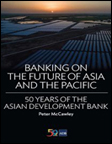 Banking on the Future of Asia and the Pacific: 50 Years of the Asian Development BankThis book tells the five-decade history of the Asian Development Bank (ADB), illustrating how the multilateral bank has grown and expanded, tackling Asia and the Pacific region’s economic development, and the evolution of its international development agenda. It discusses how ADB has helped promote regional cooperation and integration by developing subregional cooperation programs, including SASEC, which was formally established in 2001 as a project-based initiative to promote economic cooperation through the enhancement of cross-border connectivity and facilitation of trade. In 2006, the ADB Board approved the Regional Cooperation and Integration (RCI) Strategy based on four pillars: subregional economic cooperation on cross-border infrastructure and related software, trade and investment cooperation and integration, monetary and financial cooperation and integration, and cooperation in regional public goods. The RCI strategy envisaged ADB as a money bank, as a knowledge bank, as a capacity builder, and as an honest broker. Author: Peter McCawley Year: 2017 Download Tags: ADB, Development, Regional Cooperation, SASEC Facilitate Trade for Development: Aid for Trade The Aid for Trade program has been providing support to developing economies in tackling obstacles to growth through better facilitation of trade in the last 10 years. Since its launch in 2006, a total of $308 billion has been disbursed to finance aid-for-trade programs and projects, which are working to reduce trade and transport costs, promote trade expansion, and achieve economic and social objectives. As high trade costs persist in keeping developing countries from fully exploiting their trade and development potential, the Aid for Trade program remains highly relevant, and will help developing economies, including landlocked and small and vulnerable economies, achieve the 2030 Agenda for Sustainable Development. Author: William Hynes and Frans Lammersen Year: 2017 Download Tags: Trade, Development, Aid for Trade, Trade Facilitation, Transport, Bangladesh, Bhutan, Myanmar, Nepal, Least Developed Countries  Development of East Coast Economic Corridor and Vizag-Chennai Industrial CorridorThe East Coast Economic Corridor (ECEC)—India’s first coastal corridor—is an integrated economic development initiative that is expected to help pursue industrialization and integrate domestic companies into the global value chains of Southeast Asia and East Asia. Its development will start with Vizag–Chennai Industrial Corridor (VCIC), which covers about 800 kilometers and includes several ports and major industrial centers. This paper discusses strategies to consider when trying to improve shipping and air connectivity in the ECEC and Vizag–Chennai Industrial Corridor (VCIC). It stresses the importance of infrastructure development and regulatory reforms that facilitate increased connectivity. Author: Pritam Banerjee Year: 2017 Download Tags: Bangladesh, Connectivity, Economic Corridor, India, Infrastructure, Regional Integration, Trade Facilitation, Transport, Development, Economic Corridor Development, ADB RCI 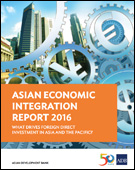 Asian Economic Integration Report 2016: What Drives Foreign Direct Investment in Asia and the Pacific?The 2016 Asian Economic Integration Report reviews regional economic cooperation and integration in Asia and the Pacific, amidst the rising global uncertainty following the United Kingdom’s referendum on leaving the European Union and the U.S. election, slower-than-expected global economic recovery, and ongoing economic restructuring in the People’s Republic of China and growth moderation. Asia faces heightened uncertainty–trade growth decelerated in 2015, falling to 2.3% in 2015; subregional trade linkages continue to strengthen, but inter-subregional trade linkages weakened; and non-tariff measures have become major obstacles to trade. In South Asia, SASEC cooperation has improved access to key markets in smaller economies, reduced real trade costs and behind-the-border barriers to stimulate investment; and enabled cross-border power exchanges to ensure power supply affordability, reliability, and overall grid stability. However, the SASEC agenda needs to be framed within wider integration processes taking place in Asia in the next decade to enhance economic linkages, and harness the full potential of Asian integration. Author: Asian Development Bank Year: 2016 Download Tags: ADB, ASEAN, Asia-Pacific, Development, FDI, Free Trade Agreements, Regional Cooperation, Regional Integration, SASEC, Trade Facilitation, UNCTAD, Bangladesh, Bhutan, India, Maldives, Nepal, Sri Lanka Asian Development Outlook 2016 Supplement: Asia's Growth Prospects Undimmed by Brexit VoteRecent global developments have prompted revisions to developing Asia's 2016 and 2017 growth outlook, as published in March in Asian Development Outlook 2016 (ADO 2016). Uncertainty following the British vote to leave the European Union chilled already tepid recovery in the euro area. While developments have affected developing Asia’s currency and stock markets, its impact on the real economy in the short term is expected to be small. This Supplement expects the region to expand by 5.6% in 2016 and 5.7% in 2017. India has shrugged off global headwinds and is expected to grow by 7.4% in 2016 and 7.8% next year. South Asia as a whole will be the region’s fastest growing subregion. Author: Asian Development Bank Year: 2016 Download Tags: ADB, South Asia, Development Thirty Years of SAARC: Society, Culture and DevelopmentThis book traces economic and political issues through SAARC’s 30-year journey. The collection provides a well-researched assessment of SAARC, looks at policy directives for the future, and examines constraints to cooperation in South Asia. The publication argues that countries need to consider the benefits of economic cooperation if they wish to play an increased role in globalization. Author: Rajiv Kumar and Omita Goyal, editors Year: 2016 Download Tags: SAARC, Regional Cooperation, Development ADB 2015 Development Effectiveness ReviewThe Asian Development Bank (ADB) is committed to implementing reforms to reach its goals to be a bigger, faster, and stronger development institution. The 2015 Development Effectiveness Review is the annual performance report of the ADB. It tracks development progress in Asia and the Pacific and monitors ADB's effectiveness. The report also takes a look at rapid gains made by ADB developing member countries and examines the challenges that lie ahead. Planned reforms laid out in the book include those that tackle sustainability issues internally and in developing member countries. Author: Asian Development Bank Year: 2016 Download Tags: Development, Asia-Pacific, Poverty Reduction, ADB Asian Development Outlook 2016: Asia’s Potential GrowthThe Asian Development Outlook 2016 forecasts 5.7% growth for developing Asia in 2016 and 2017. It projects that South Asia will post the most rapid growth in developing Asia, with growth in the subregion accelerating to 7% in 2015, and will accelerate further to 7.3% in 2017 after a slight dip to 6.9% in 2016. India's growth is expected to undergo a slight slowdown to 7.4% in 2016 as exports decline and both public and private investment slows, but rebound to 7.8% in 2017 as the business environment improves, and exports and investment recover. Bangladesh will also see continued moderate growth, resulting from sustained progress toward macroeconomic and structural reform. Author: Asian Development Bank Year: 2016 Download Tags: Asia, India, Bangladesh, Economic Growth, Development, ADB Sri Lanka: Building on SuccessOver the years, the Asian Development Bank (ADB) and its many partners in Sri Lanka have worked together to realize the goal of changing the country’s status from low to middle income. With Sri Lanka moving toward becoming an upper middle-income country in a few years, challenges lie on the road ahead. This publication provides an overview of recent ADB support toward Sri Lanka's development in diverse areas including transport, energy and education, and discusses how the Government of Sri Lanka and ADB will transition their partnership to push the country to the next level of prosperity. Author: Asian Development Bank Year: 2015 Download Tags: Sri Lanka, Transport, Ports, Development, Economic Growth Building Firm-level Trade Competitiveness in Emerging EconomiesThis paper -- produced under the E15 Initiative and implemented jointly by the International Centre for Trade and Sustainable Development and World Economic Forum -- seeks to understand the framework of competitiveness and its implications for international trade. It discusses issues related to firm-level competitiveness, including the determinants; quality tools and models to address it, especially in developing economies and small and medium enterprises (SMEs); importance of diffusion and learning with a focus on SME growth; and specific policy interventions to improve firm-level competitiveness. Author: Sharmila Kantha Year: 2015 Download Tags: Firms, SME, Trade, Development, Sustainability, India, South Asia, Energy Asian Development Outlook 2015 Supplement: Growth Prospects Soften for Developing AsiaThis Supplement revises growth projections for developing Asia published in the Asian Development Outlook (ADO) 2015 in March, as slower-than-expected recovery in the United States and moderating growth in the People’s Republic of China weigh on the region’s prospects. Economic outlook for South Asia is stronger growth in the subregion as a whole in 2015 than forecast in ADO 2015, now bumped up slightly to 7.3% from 7.2%. The projection for 2016 remains the same at 7.6%. By individual countries, stronger growth is estimated for Bangladesh in FY2015, but slower growth is projected for the Maldives and earthquake-struck Nepal. Author: Asian Development Bank Year: 2015 Download Tags: Development, Economic Growth, South Asia Outward FDI by Indian Manufacturing MNEs: Impacts and Implications This Asia-Pacific Research and Training Network on Trade Working Paper investigates the home country effects of outward foreign direct investment (OFDI) on domestic activity of Indian multinational enterprises (MNEs). The empirical evidence suggests that OFDI by Indian MNEs has a positive impact on export intensity and research and development. In order to derive desired complementary benefits of OFDI by manufacturing firms, policies may be directed to enhance the country’s international supply chain connectivity for greater participation in global value chain and production network. Author: Khanindra Ch. Das Year: 2015 Download Tags: India, FDI, Global Value Chains, Trade, Export, Development, Manufacturing, UNESCAP UNCTAD Transport Newsletter: Fourth Quarter 2014This United Nations Conference on Trade and Development (UNCTAD) newsletter focuses on the development dimension and benefits of the World Trade Organization Trade Facilitation Agreement. It includes sections on the national trade facilitation committees, project proposal for the implementation of trade facilitation measures contained in the agreement, and improvement in implementation of sanitary and phytosanitary measures to facilitate trade. It also includes UNCTAD’s contribution to trade facilitation in Landlocked Developing Countries and Small Island Developing States. Author: United Nations Conference on Trade and Development Year: 2014 Download Tags: Trade Facilitation, WTO, UNCTAD, Transport, Development, Sanitary and Phytosanitary Measures, Energy, India 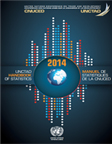 UNCTAD Handbook of Statistics 2014The UNCTAD Handbook of Statistics is a collection of statistics and indicators relevant to the analysis of international trade, investment and development. The 2014 edition shows the increasing convergence of trade balance between developing and developed economies continues. The report also includes regional trade data from South Asia that shows average annual growth rate of international trade improved from a previous deficit of -7.1% in 2012 to -0.1% in 2013. However, trade balance ran a deficit of -26.51% compared to the previous year's -25.94%. Trade indicators also report intra-trade in South Asian Association for Regional Cooperation region rose modestly from US$ 20,219 million to US$ 23,181 million between 2012 to 2013 and maintains intra-regional trade percentage at 5.8%. Author: United Nations Conference on Trade and Development Year: 2014 Download Tags: UNCTAD, Regional Trade, Development, Bangladesh, Bhutan, India, Maldives, Nepal, Sri Lanka, Transport World Trade Report 2014 – Trade and Development: Recent Trends and the Role of the WTOThis annual publication highlights the relationship between trade and development, including changes since the start of the millennium. It identifies four key trends that altered the way trade affects development outcomes – accelerated economic growth in developing countries, expansion of global value chains, increase in agricultural and natural resource prices, and global nature of macroeconomic shocks. This report also explores how these trends have reshaped the role of trade in facilitating development and how recent development gains allow developing countries to adapt and mitigate risks. Author: World Trade Organization Year: 2014 Download Tags: WTO, Global Value Chains, Trade, Economic Growth, Agriculture, Trade Facilitation, Development, Bangladesh, Bhutan, India, Maldives, Nepal, South Asia, Sri Lanka 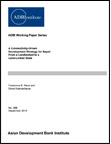 A Connectivity-Driven Development Strategy for Nepal: From a Landlocked to a Land-Linked StateTransforming Nepal from a landlocked into a land-linked state, the authors argue, could be key to unlocking the country's much-awaited growth. With its strategic location between India and the People's Republic of China, a connectivity-driven development strategy could energize Nepal's lackluster post-conflict economic performance. Further, Nepal implements a multi-track approach to promoting regional cooperation and integration in connectivity with its neighbors, reinforced through participation in South Asian Association for Regional Cooperation, Bay of Bengal Initiative for Multi-Sectoral Technical and Economic Cooperation, and South Asia Subregional Economic Cooperation. By identifying ten priority projects that could further boost Nepal's connectivity, the paper also discusses how strengthening Nepal's transport, energy, and trade links could benefit the region. However, the authors also warn against “internal threats” to Nepal's development—corruption and the country's difficult political situation. Author: Pradumna B. Rana and Binod Karmacharya Year: 2014 Download Tags: Nepal, Economic Corridor, Regional Trade, Connectivity, Development, Economic Growth, SASEC, India, Regional Cooperation, Regional Integration, SAARC, BIMSTEC, Transport, Energy, Trade Together We Deliver: 10 Stories from ADB-Supported Projects Together We Deliver showcases ten ADB projects across Asia and the Pacific that demonstrate clear development impacts, replicable best practices, and valuable use of innovation. Among those highlighted is SASEC's Green Power Development Project in Bhutan, which is boosting the national economy through clean energy exports to India and also funding social programs that bring electricity to more than 8,500 rural poor households. The book also features a rural road project in India that connects remote communities to schools, hospitals, and other facilities. Capturing a wide range of ADB's assistance, the book portrays how ADB is changing for better the lives of many in Asia and the Pacific region. Author: Asian Development Bank Year: 2014 Download Tags: Regional Cooperation, Bhutan, India, Development, Energy Evaluating Aid for Trade on the Ground: Lessons from BangladeshThis paper assesses the effectiveness and impact of aid for trade (AfT) in Bangladesh in a series of eight country studies by the International Center for Trade and Sustainable Development. The study argues that the results for AfT are mixed for Bangladesh since it has addressed supply side constraints and contributed to enhancing export competitiveness. However, lack of efficient administrative mechanisms, limited human capacity, and political instability that lead to low absorption capacity limits the overall effectiveness and impact of AfT in Bangladesh. Author: Fahmida Khatun, Samina Hossain and Nepoleon Dewan Year: 2013 Download Tags: Bangladesh, Trade, Aid for Trade, Sustainability, Export, Development, Asia, Gender, LDC, Least Developed Countries World Development Indicators 2013This 2013 World Development Indicators report compiles important statistics about global development organized around six themes- world view, people, environment, economy, states and markets, and global links. Relevant market changes, such as the rise in foreign direct investments or the decrease in official development assistance, are tracked. It also contains a hyperlinked index to comprehensive indicator data available online. Author: World Bank Year: 2013 Download Tags: Statistics, Development Bhutan Critical Development ConstraintsBhutan 2020: A Vision for Peace, Prosperity and Happiness embodies the development philosophy
of His Majesty King Jigme Singye Wangchuck and sets out directions that will enable Bhutan to
execute this philosophy while at the same time retaining its commitment to its distinctive model
of harmonious and balanced development. Author: Asian Development Bank / Australian Government / Japan International Cooperation Agency Year: 2013 Download Tags: Bhutan, Development Climate Action South Asia: Information Update No. 2 (Economics of Reducing Greenhouse Gas Emissions in South Asia: Options and Costs)The study Economics of Reducing Greenhouse Gas Emissions: Options and Costs in Bangladesh, Bhutan, the Maldives, Nepal, and Sri Lanka reveals excellent opportunities in low-carbon green growth by pursuing resource- and energyefficient technologies that would lower emissions of greenhouse gases at low cost or even cost saving (benefits). Author: Asian Development Bank Year: 2013 Download Tags: Economics, Climate, Climate Change, Economics, South Asia, Bangladesh, Bhutan, Maldives, Sri Lanka, Energy, Environment, Sustainability, ADB, Nepal, Development, Hydropower Climate Action South Asia: Information Update No. 1 (Development in an Era of Accentuated Climate Risks)To steer South Asian economies toward green, low-carbon, and climate-resilient development and for these to take hold in South Asia, the countries need (i) better understanding and greater public awareness of the implications of climate change, (ii) climate risks screening and decision-support tools for identifying actions and managing results, (iii) improved governance and institutional capacities to take necessary actions to manage climate change impacts, (iv) funding sources for such actions, and (v) projects and programs demonstrating positive results that can be scaled up. Author: Asian Development Bank Year: 2012 Download Tags: Economics, Climate, Climate Change, Environment, Sustainability, South Asia, Development, Economic Growth, ADB South Asia- Intra Regional Cooperation: The Way ForwardThis study aims to showcase the benefits of regional integration and recommends strategies for overcoming the many hurdles. Author: Shahid Kardar Year: 2011 Download Tags: Policy, Economic Cooperation, Regional Integration, Development, SAARC, Non-Tariff Measures, Trade Facilitation, SAFTA, India, Bangladesh, Bhutan, Maldives, Nepal, Sri Lanka, BIMSTEC, Myanmar, SASEC, Energy 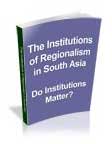 The Institutions of Regionalism in South Asia - Do Institutions Matter?This paper assesses the contribution of key institutions of regional cooperation and integration (RCI) in South Asia, and suggests ways in which the Asian Development Bank and other development partners can strengthen their support. It attempts to enhance understanding on the interplay between politics and RCI, including how good bilateral political relations or improvements have advanced RCI. With the overall political environment growing increasingly open to RCI, the paper suggests the time has come for the South Asian Association for Regional Cooperation (SAARC) to consider strengthening the capacity of the SAARC Secretariat to meet the growing challenges and work load of managing the anticipated increase in RCI. Author: Prabhu Ghate Year: 2011 Download Tags: Regional Cooperation, Regional Integration, Development, SAARC, Trade, Services, Trade Facilitation, Energy, Free Trade Agreements, SAFTA, Bangladesh, Bhutan, India, Maldives, Nepal, Sri Lanka, Transport Management Development and Institution Building in SASEC CountriesThe study identifies challenges in management development in the four SASEC countries by comparing institutional development in Bhutan, Nepal, and Bangladesh universities with the experience of the Indian Institutes of Management (IIMs). It discusses long-term strategies and alternatives to strengthen the management development capacity in the region and support private sector needs. Author: Sushil Khanna Year: 2004 Download Tags: Development, India |



